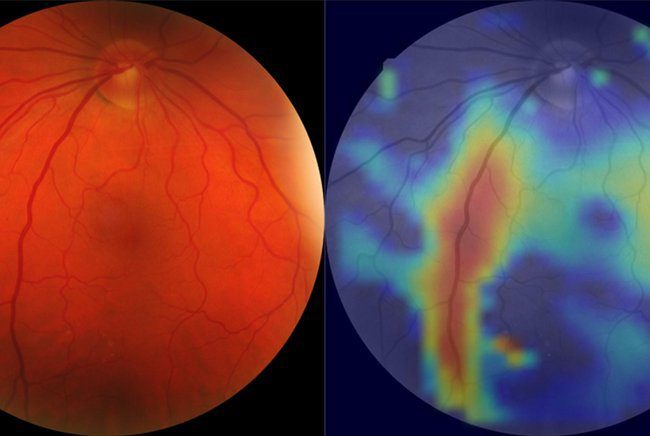No products in the cart.
blog, Retina imaging
Smartphone Fundoscopes: future advancements and innovations
The smartphone has become an indispensable tool in our daily lives, serving as a means of communication, entertainment, and information access. In recent years, there has been an increasing interest in using smartphones for healthcare applications, especially in the field of ophthalmology. One such application is the use of smartphone fundoscopes, which are devices that attach to smartphones to allow for non-invasive retinal imaging. The future of smartphone fundoscopes is poised to be one of advancements and innovations, with a significant role for artificial intelligence and ophthalmic lesions detection algorithms.

A smartphone fundoscope is a device that uses a phone camera, lens, and a light source to capture images of the retina, the innermost layer of the eye. These images can be used to detect a variety of ocular conditions, such as diabetic retinopathy, age-related macular degeneration, and glaucoma. The non-invasive nature of this technology makes it an attractive option for healthcare professionals and patients alike.
One of the most significant advancements in smartphone fundoscopes is the integration of artificial intelligence (AI) and machine learning algorithms. AI algorithms can be trained to automatically detect ophthalmic signs in retinal images. This can lead to faster and more accurate diagnoses, as well as increased efficiency in the healthcare system.
For example, AI algorithms can be trained to detect the presence of diabetic retinopathy, a condition that can lead to blindness if left untreated. By analyzing retinal images, AI algorithms can identify characteristic signs of diabetic retinopathy, such as blood vessel abnormalities and hemorrhages. This can significantly improve the accuracy and speed of diagnoses, allowing for earlier treatment and potentially avoiding vision loss.
Another exciting development in the field of smartphone fundoscopes is the integration of virtual reality (VR) and augmented reality (AR) technologies. For example, VR and AR can be used to create immersive and interactive educational experiences for patients, helping to improve patient understanding and engagement with their ocular health. In addition, VR and AR can be used to assist healthcare professionals in the interpretation of retinal images, making it easier to identify ocular conditions and plan appropriate treatments.

Finally, the future of smartphone fundoscopes will also be shaped by the continued development of cloud-based systems and big data analytics. This will allow for the centralized storage and analysis of large amounts of retinal images, making it easier to detect patterns and trends in ocular health. This can be particularly useful in large-scale studies and in monitoring the progression of ocular conditions over time.
These advancements have the potential to greatly improve the accuracy and speed of diagnoses, as well as to increase efficiency in the healthcare system. By continuing to push the boundaries of what is possible with smartphone fundoscopes, we can transform the field of ophthalmology and improve the lives of millions of people around the world.

